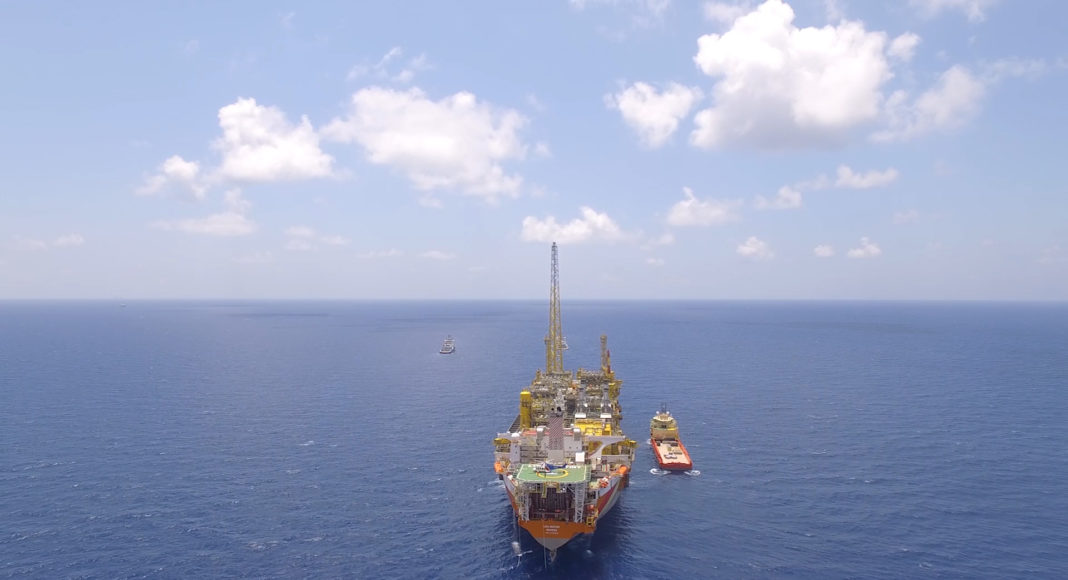Flaring at the Liza Destiny FPSO has been reduced to pilot levels and the vessel is now producing oil at full capacity of 120,000 barrels per day. The FPSO, designed to ensure there is no routine flaring in its daily operations, had encountered an issue with the gas compressor system earlier this year.
President of ExxonMobil Guyana, Alistair Routledge, sat down with OilNOW for a virtual interview last Thursday. He said as the country celebrates its first anniversary as an oil producer, looking back, it has been a “remarkable journey” and one that included challenges which the company and its team have been able to overcome.
“Of course, the last year has not been an easy year on many fronts and not least, of course, with COVID-19 affecting all of us, all of our lives since about February-March of this year,” he said. And on top of that, for our operations on board the Liza Destiny Floating Production Storage and Offloading or FPSO vessel, we had a number of technical issues that extended our commissioning period much beyond what we expected and unfortunately that led to much more flaring than we had planned for.”
Operating processes during production operations include safely flowing the reservoir hydrocarbons from the wells to the FPSO, where further processing, storage, and management occurs prior to offloading the oil to the conventional tankers. As part of the start-up phase of oil production, which began last December, systems are checked over a period of time to ensure optimal performance as production is gradually ramped up to peak output of 120,000 barrels of oil per day. It was during this period of production ramp up that a challenge was encountered with the gas handling system.
The company has since been able to safely commission the gas compression and injection system on the Liza Destiny FPSO.
“Our remarkable crews offshore, supported ably by the technical people onshore and a number of subject matter experts around the world, have finally conquered those [flaring] issues and I’m happy to report that earlier this month we were able to reduce the flare down to its background levels, just to pilot flare levels, and now we’re operating at the nameplate capacity of the vessel, about 120,000 barrels per day of production,” Routledge told OilNOW.
Pilot flaring is a standard measure which is necessary for safety reasons. Around 99.5 percent of the associated gas is now being reinjected by the Liza Destiny FPSO. The vessel also uses some of the associated gas to power its operations. OilNOW understands that the level of flaring has been reduced to around 0.5 to 0.6 MCF (thousand cubic feet).
Liza Phase 1 includes 17 subsea development wells utilizing the FPSO to process, store, and offload recovered oil. The Liza Destiny is connected to the wells via a series of subsea umbilicals, risers, and flowlines (SURF), to transmit oil, gas, and water from production wells to the vessel, as well as treated gas and water from the FPSO to the injection wells.
Oil production began at the Liza Phase 1 Development on December 20, 2019.




